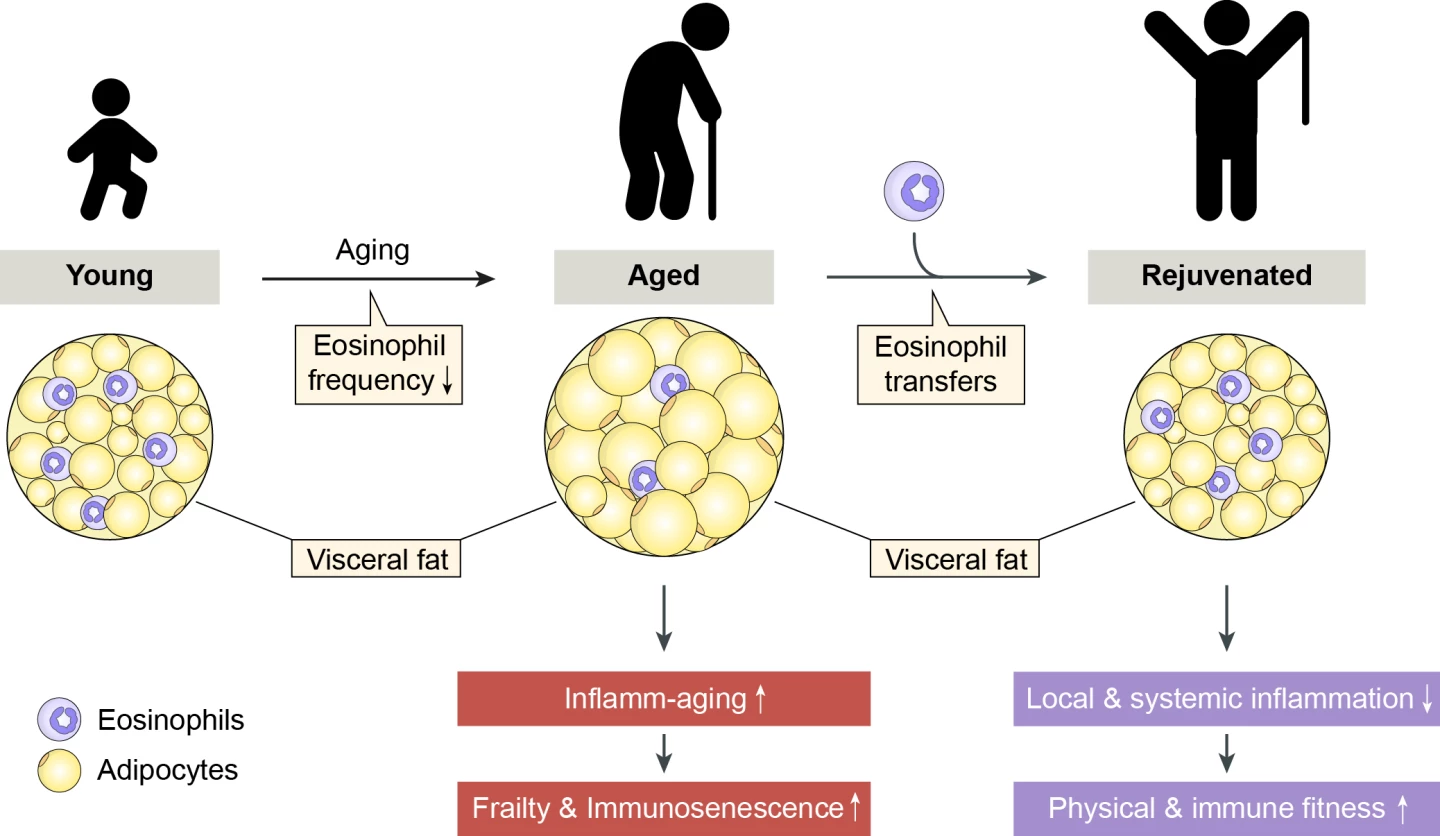One of the many deteriorative effects of aging in humans is a decline in immune system function, which invites a whole host of other risks including vulnerability to infectious diseases. Scientists may have uncovered a way to reverse this trend, using experiments in mice to demonstrate how targeting inflammation in the belly could offer a way of not just restoring a balanced immune system, but addressing an age-related decline in physical fitness.
The research was carried out by an international team led by scientists at Switzerland’s University of Bern, who began by investigating the function of specialized white blood cells called eosinophils, which curb infection and boost inflammation. These circulate through the bloodstream but can also be found in belly fat, where they work to maintain proper immune function in healthy humans.
As our age increases, however, the distribution and concentration of the eosinophil cells decrease. Meanwhile, the concentration of pro-inflammatory macrophages in the belly fat rises, creating in imbalance that increases with age and drives inflammation, which incidentally accelerates the aging process. The scientists observed this in both mice and humans, and wondered whether addressing this imbalance could offer a way to turn the whole thing around.
Through its investigations, the team found one method that appeared particularly promising. Taking eosinophil cells from young, healthy mice and transferring them to the aged mice proved to dampen the age-related inflammation.

"In different experimental approaches, we were able to show that transfers of eosinophils from young mice into aged recipients resolved not only local but also systemic low-grade inflammation," says study author Dr. Alexander Eggel. “In these experiments, we observed that transferred eosinophils were selectively homing into adipose tissue.”
The upshot of this was significant gains in the immune system function in the aged mice as demonstrated by improved vaccination responses, along with similar effects on their physical performance, observed though endurance and grip strength tests. And because the age-related imbalance of eosinophil cells has also been observed in people, the researchers are hopeful these results could translate to new therapies for humans.
“A future direction of our research will be to now leverage the gained knowledge for the establishment of targeted therapeutic approaches to promote and sustain healthy aging in humans,” says Eggel.
The research was published in the journal Nature Metabolism.
Source: University of Bern





